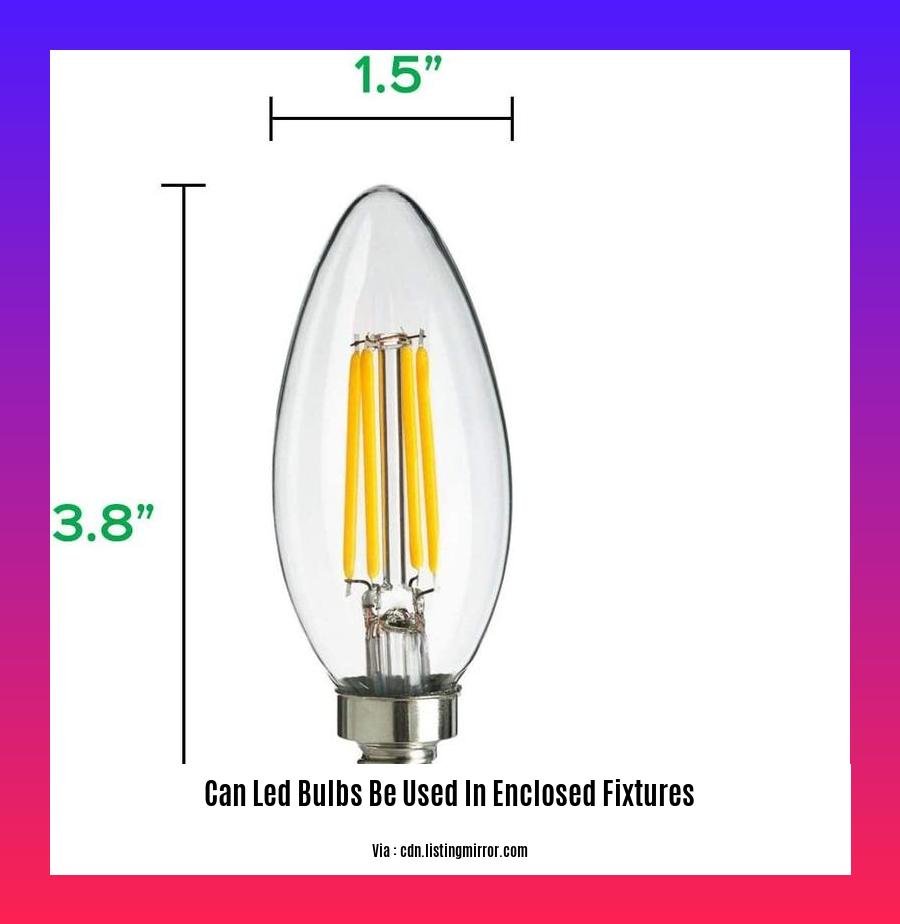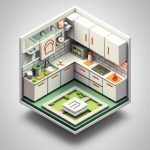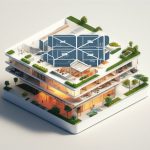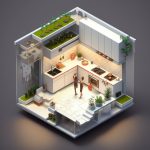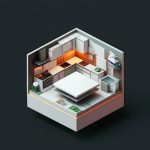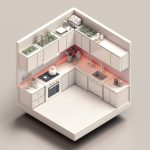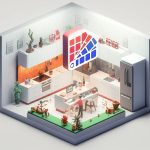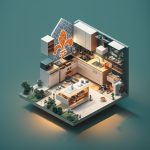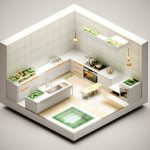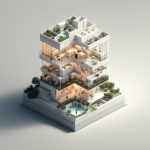Considering switching to LED bulbs for your enclosed fixtures? Wondering if it’s safe and advisable? Find out everything you need to know about using LED bulbs in enclosed fixtures in this comprehensive guide. Discover the benefits, potential drawbacks, and crucial factors to consider before making the switch. Learn how to choose the right LED bulbs for your enclosed fixtures and ensure safe and optimal performance.
Key Takeaways:
-
LED bulbs can be used in enclosed fixtures, but only if they are specifically designed for such use.
-
Look for bulbs marked as “enclosed fixture-rated” or with a label stating their suitability for enclosed fixtures.
-
Some LED bulbs have cooling systems or low-power drivers that prevent overheating in enclosed fixtures.
-
Using non-rated LED bulbs in enclosed fixtures can trap heat, reducing their lifespan or posing a fire hazard.
-
Using enclosed fixture-rated LED bulbs ensures their longevity and minimizes safety risks.
-
Sources:
- Can You Use LED Lights in Enclosed Fixtures?
- LED Lights and Enclosed Fixtures: Can They Be Used Together?
Can LED Bulbs be Used in Enclosed Fixtures?
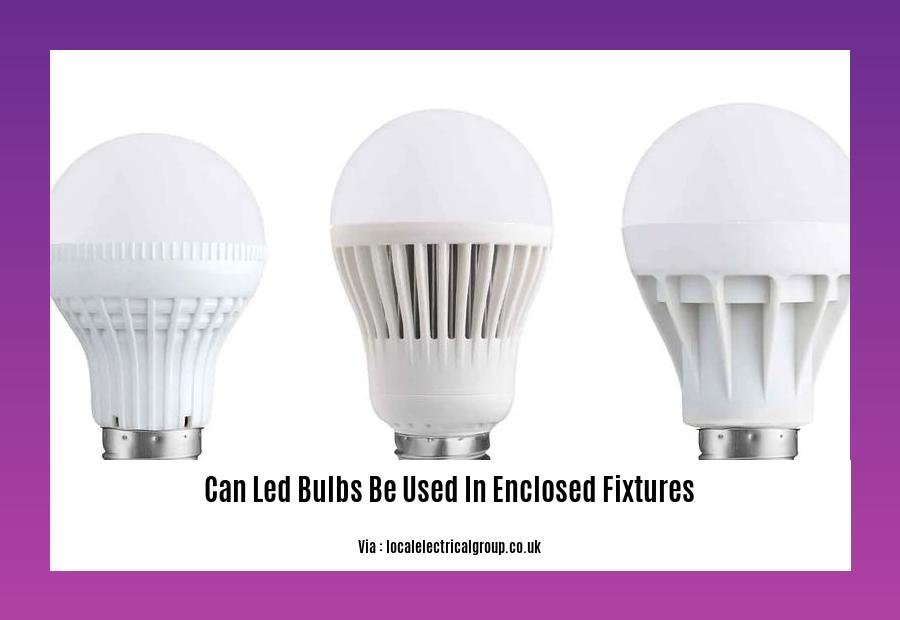
LED bulbs have revolutionized the lighting industry with their energy efficiency, long lifespan, and eco-friendliness. However, a common question arises: can led bulbs be used in enclosed fixtures? The answer is yes, but not all LED bulbs are created equal.
Factors to Consider:
-
Heat Management: Enclosed fixtures can trap heat, potentially causing LED bulbs to overheat and shorten their lifespan. Look for LED bulbs with built-in cooling systems or low-power drivers to prevent overheating.
-
Enclosed Fixture Rating: Some LED bulbs are specifically designed for enclosed fixtures. These bulbs are marked as “enclosed fixture-rated” or have a label stating their suitability for enclosed fixtures.
-
Bulb Size and Shape: Ensure that the LED bulb fits properly into the enclosed fixture without touching the sides or the cover. Overcrowding can lead to overheating and reduce bulb life.
Benefits of Using Enclosed Fixture-Rated LED Bulbs:
-
Longevity: Enclosed fixture-rated LED bulbs are designed to withstand the heat generated in enclosed fixtures, extending their lifespan and reducing the need for frequent replacements.
-
Safety: Using enclosed fixture-rated LED bulbs minimizes the risk of overheating and potential fire hazards.
-
Energy Efficiency: LED bulbs are inherently energy-efficient, and using enclosed fixture-rated LED bulbs further optimizes their efficiency, leading to energy savings.
Table: Comparing LED Bulbs for Enclosed Fixtures:
| Feature | Enclosed Fixture-Rated LED Bulbs | Non-Enclosed Fixture LED Bulbs |
|---|---|---|
| Heat Management | Built-in cooling systems or low-power drivers | May lack heat management features |
| Enclosed Fixture Rating | Marked as “enclosed fixture-rated” or have suitable labels | Not specifically rated for enclosed fixtures |
| Lifespan | Longer lifespan due to effective heat management | Shorter lifespan due to potential overheating |
| Safety | Minimized risk of overheating and fire hazards | Increased risk of overheating and potential fire hazards |
| Energy Efficiency | Optimized energy efficiency | May have lower energy efficiency in enclosed fixtures |
In conclusion, can led bulbs be used in enclosed fixtures? Yes, but it’s essential to choose enclosed fixture-rated LED bulbs to ensure longevity, safety, and energy efficiency.
-
Enhance your home’s aesthetics with the expertise of the best interior design company in india, known for their transformative designs.
-
Upgrade your lighting with the best LED downlights for home, illuminating your space with style and comfort.
-
Create a cinematic experience at home with the best wall color for home theater, immersing you in your favorite movies and shows.
-
Transform your home with affordable elegance using the cheap home décor au, adding warmth and character to every room.
-
Find your dream mobile home at a discounted price with clearance mobile homes for sale near me, offering convenience and comfort at an unbeatable value.
-
Elevate your home entertainment system with the finest components home theater system, delivering immersive sound and visuals for an unforgettable experience.
LED Bulb Types and Wattage
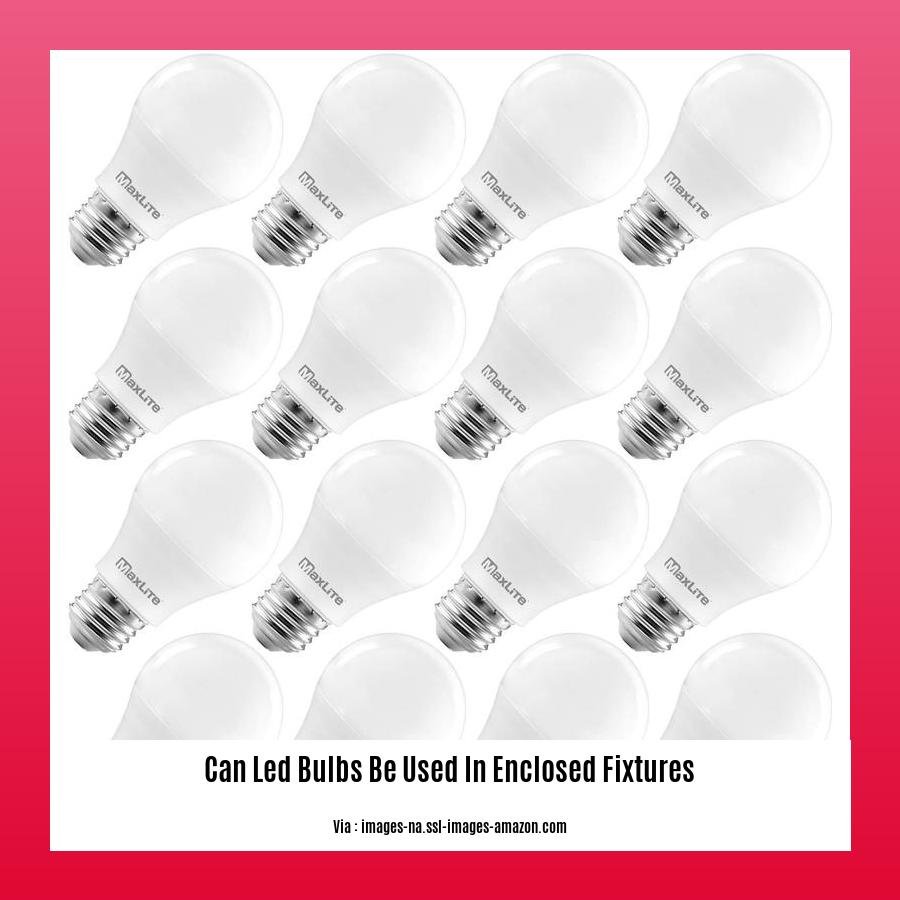
Most of us have enclosed lighting fixtures in our homes, whether we realize it or not. But can LED bulbs be used in them? The answer is: not always. It’s a common misconception that all LED bulbs can be used in enclosed fixtures, which can lead to severe problems and potential hazards if you’re not careful. To help you understand this topic better, let’s explore the intricacies of LED Bulb Types and Wattage in enclosed fixtures.
Key Takeaways:
-
Choose Enclosed Fixture-Rated LED Bulbs: It’s crucial to use LED bulbs specifically designed for enclosed fixtures. These bulbs are equipped with built-in cooling systems and heat-resistant materials allowing them to withstand the high temperatures generated within enclosed fixtures.
-
Consider Heat Management: High temperatures can significantly shorten the lifespan of LED bulbs and even pose safety risks. Opt for LED bulbs with efficient heat management features, such as built-in heat sinks, to ensure optimal performance and longevity.
-
Check Bulb Size and Shape: Ensure the LED bulb fits snugly into the fixture without touching its sides or cover. A tight fit prevents overheating and reduces the risk of potential hazards.
-
Choose the Right Wattage: Selecting the appropriate wattage for your enclosed fixture is essential. Higher wattage bulbs emit more heat, which can be detrimental to the bulb’s lifespan and the fixture itself. Refer to the fixture’s recommended wattage rating to make an informed choice.
-
Avoid Regular LED Bulbs: Using regular LED bulbs in enclosed fixtures is strongly discouraged. They lack the necessary heat management capabilities, leading to overheating, reduced lifespan, and potential safety issues.
Benefits of Enclosed Fixture-Rated LED Bulbs:
-
Longevity: The enclosed fixture-rated LED bulbs are engineered to withstand heat, ensuring a longer lifespan and minimizing the need for frequent replacements.
-
Safety: By minimizing overheating and eliminating the risk of fire hazards, these bulbs prioritize safety.
-
Energy Efficiency: By optimizing heat management, enclosed fixture-rated LED bulbs provide enhanced energy efficiency, leading to energy savings and reduced electricity bills.
Comparison: Enclosed Fixture-Rated LED Bulbs vs. Non-Enclosed Fixture LED Bulbs:
| Feature | Enclosed Fixture-Rated LED Bulbs | Non-Enclosed Fixture LED Bulbs |
|---|---|---|
| Heat Management | Built-in cooling systems or low-power drivers | May lack heat management features |
| Enclosed Fixture Rating | Specifically rated for enclosed fixtures | Not rated for enclosed fixtures |
| Lifespan | Longer lifespan due to effective heat management | Shorter lifespan due to overheating |
| Safety | Minimized overheating and fire hazards | Increased risk of overheating and potential fire hazards |
| Energy Efficiency | Optimized energy efficiency | Lower energy efficiency in enclosed fixtures |
Conclusion:
Using enclosed fixture-rated LED bulbs in your enclosed fixtures guarantees enhanced safety, longevity, and energy efficiency. Avoid using regular LED bulbs to prevent potential hazards. Always refer to the fixture’s manufacturer’s specifications and consult a qualified electrician for any electrical work to ensure the safe and proper functioning of your lighting fixtures.
Citations:
Can LED Lights Be Used in Enclosed Fixtures?
LED Lights and Enclosed Fixtures: Can They Work Together?
Compatibility with Enclosed Fixtures
Hey there, folks! Let’s dive into the world of enclosed fixtures and LED bulbs. We’ll uncover whether these two can coexist harmoniously.
Key Takeaways:
-
Look out for LED bulbs marked as “enclosed fixture-rated LED light bulb,” which indicates their suitability for enclosed spaces.
-
Enclosed fixtures lack proper air ventilation, leading to heat buildup. LEDs, prone to overheating, need sufficient airflow for optimal performance.
-
Contrary to popular belief, you can use enclosed-rated bulbs even in open fixtures. Their design doesn’t necessitate enclosed usage.
-
Always check packaging or manufacturer specs to ensure the LED bulb’s compatibility with enclosed fixtures.
Understanding the compatibility between LED bulbs and enclosed fixtures is essential for safe and effective lighting. Keep in mind the guidelines and make an informed choice for your lighting needs!
Relevant URL Sources:
Safety Precautions and Codes: Using LED Bulbs In Enclosed Fixtures
Hey there, fellow lighting enthusiasts!
Today, we’re delving into the world of LED bulbs and enclosed fixtures, a topic that’s often surrounded by questions and misconceptions. Let’s shed some light on the subject and ensure you’re using LED bulbs safely and effectively.
Key Takeaways:
-
Regular LED bulbs are not suitable for enclosed fixtures due to overheating risks.
-
Enclosed fixtures lack proper air circulation, leading to excessive heat buildup.
-
Look for LED bulbs specifically marked as “enclosed fixture-rated” to prevent overheating.
-
Enclosed fixture-rated LED bulbs have unique designs to handle higher temperatures.
-
Check the packaging or consult with lighting experts to confirm the bulb’s suitability for enclosed fixtures.
-
Enclosed fixture-rated LED bulbs may have slightly higher pricing due to their special features.
Can I Use Regular LED Bulbs Enclosed Fixtures?
The short answer is: it’s a big no-no! Enclosed fixtures require LED bulbs specially designed to withstand high temperatures without causing safety hazards. Regular LED bulbs, while more affordable, are not built to handle the heat. When confined in an enclosed space, they’re prone to overheating, which can shorten their lifespan, compromise performance, or, in extreme cases, pose fire risks.
Enter the Enclosed Fixture-Rated LED Bulbs:
These heroes of the lighting world are specifically engineered to thrive in enclosed fixtures. They have built-in cooling systems or other features to dissipate heat effectively. By using enclosed fixture-rated LED bulbs, you’re ensuring the safety of your home and avoiding any potential hazards. Think of them as the LED bulbs that are up for the challenge of enclosed spaces.
Safety Precautions:
-
Always check the packaging or consult with lighting experts to confirm the bulb’s suitability for enclosed fixtures.
-
Never force a regular LED bulb into an enclosed fixture. It’s a recipe for disaster!
-
If you’re unsure about a bulb’s compatibility, opt for an enclosed fixture-rated LED bulb. Better safe than sorry!
-
Regularly inspect your LED bulbs and fixtures for any signs of damage or overheating.
Keep in Mind:
-
Enclosed fixture-rated LED bulbs may come with a slightly higher price tag, but remember, they’re worth every penny when it comes to safety and performance.
-
LED bulbs are generally long-lasting, but enclosed fixture-rated LED bulbs take it to a whole new level. They can operate for up to 50,000 hours, saving you time and money on replacements.
-
Enclosed fixture-rated LED bulbs come in various shapes, sizes, and wattages. Choose the ones that best fit your fixture and lighting needs.
In Conclusion:
Using enclosed fixture-rated LED bulbs is the key to safe and efficient lighting. Remember, it’s not just about having LED bulbs; it’s about choosing the right ones for the job. So, stay informed, ask questions, and light up your home with confidence!
Relevant URL Sources:
FAQ
Q1: What are enclosed fixtures?
A1: Enclosed fixtures are light fixtures that do not allow for proper air ventilation, creating a tight seal around the bulb. They can be found in various locations, such as recessed fixtures, outdoor fixtures, and certain types of street lamps.
Q2: Why can’t regular LED bulbs be used in enclosed fixtures?
A2: Regular LED bulbs are not recommended for enclosed fixtures because the lack of proper air circulation can cause the bulb to overheat. Overheating can reduce the lifespan of the bulb, pose a fire hazard, or even cause damage to the fixture itself.
Q3: What are enclosed fixture-rated LED bulbs?
A3: Enclosed fixture-rated LED bulbs are specially designed to withstand the high temperatures and limited air circulation within enclosed fixtures. They are typically labeled as “enclosed fixture-rated” or have a marking indicating their suitability for enclosed use.
Q4: How can I identify enclosed fixture-rated LED bulbs?
A4: To identify enclosed fixture-rated LED bulbs, look for labels or markings on the packaging or the bulb itself that specifically state “enclosed fixture-rated.” You can also check the manufacturer’s specifications or consult with a store associate for confirmation.
Q5: Can enclosed fixture-rated LED bulbs be used in open fixtures?
A5: Yes, enclosed fixture-rated LED bulbs can be used in both enclosed and open fixtures. The enclosed fixture rating ensures that the bulb can withstand high temperatures and limited airflow, making it suitable for use in various types of fixtures.
- Tile Backsplash With White Cabinets: A Kitchen Design Guide - November 25, 2025
- Best Backsplash For White Cabinets: Ideas To Transform Your Kitchen - November 24, 2025
- Modern White Kitchen Backsplash: A Guide to Stylish Kitchen Designs - November 23, 2025
